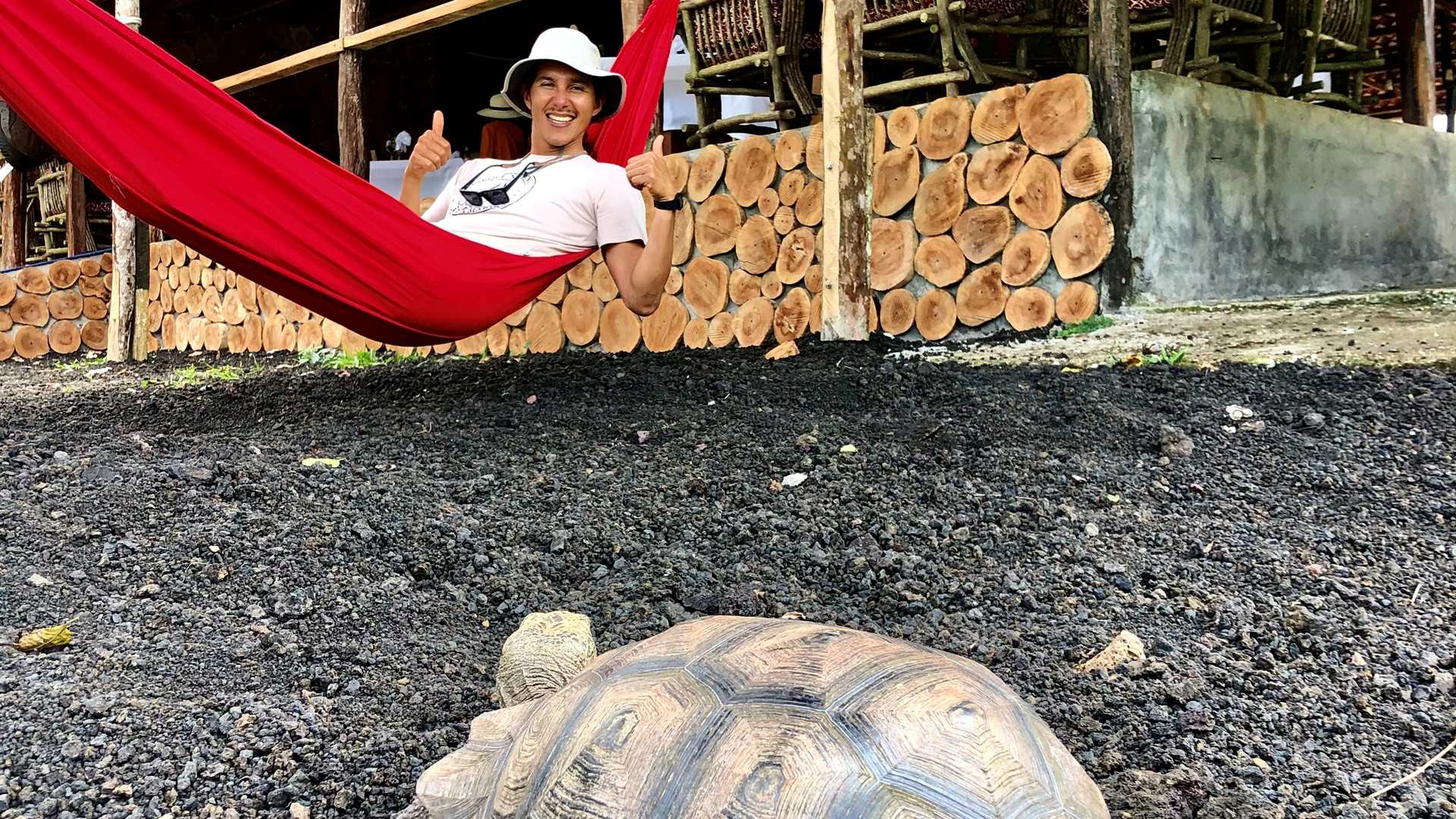Today is giant tortoise day! We anchor in the northern part of Santa Cruz and start our day with a short Zodiac drive to the turquoise waters of Itabaca Channel. We drive up to the highlands of Santa Cruz Island, leaving behind the coastal zone vegetation and passing through dry forest before immersing ourselves in the humid zone, where everything is green. We stop at Los Gemelos, two volcanic craters surrounded by a scalesia forest. In this magical area we spot a variety of endemic birds and plants while learning about the geology of the island. Finally, we arrive in the luxuriant green highlands of Santa Cruz where we spot countless Galapagos tortoises. We spend all morning walking around these giants while we learn about their history, biology, and behavior as they roam peacefully in their natural habitat. These enormous creatures are truly fascinating to observe, which some of us did while sitting under a tree, painting, taking pictures, or chilling in a hammock. The giant tortoises are everywhere, and we spot dozens of them from the restaurant where we have lunch. On our way back, a flock of blue-footed boobies flies overhead, making us feel we are inside a nature documentary! We cap off this amazing day with a sunset walk on the beach before returning to the National Geographic Endeavour II.
6/13/2025
Read
National Geographic Endeavour II
Genovesa Island
We started the day with excitement as we landed on the beautiful, pristine coast of Isla Genovesa - a true birder’s dream. Along the sandy beaches and steep cliffs of Darwin Bay, we were surrounded by an incredible array of birdlife. Frigatebirds soared closely overhead with their red pouches on full display, while Nazca and blue-footed boobies nested along the rocky ledges. Swallow-tailed gulls called out as we walked past. In the distance, we saw the stoic and elusive short-eared owl. The island was alive with color, sound, and constant movement. Between our excursions to Isla Genovesa, we snorkeled near Prince Philip’s Steps and discovered a vibrant world beneath the waves. Schools of fish swirled around us, a fur seal turned in the water as if dancing on cue, and sea lions relaxed nearby. As our last snorkeling adventure came to a close, we spotted a sea turtle resting calmly in a crevice. As the sun retreated into the sky on our last return to National Geographic Endeavor II, we reflected on the sheer magnitude of what we witnessed on our last full day. Isla Genovesa, like the other islands, gave us a connection to a sacred world. The harmony between land, sea, and sky reminded us how deeply interconnected, vital, and fragile these ecosystems are. Watching birds tend to their nests and marine life swim effortlessly, we were struck by how little space there is between wonder and reverence. We recognized that our journey wasn’t just about observing unique wildlife, it was about feeling part of something grander and beautifully ancient.









